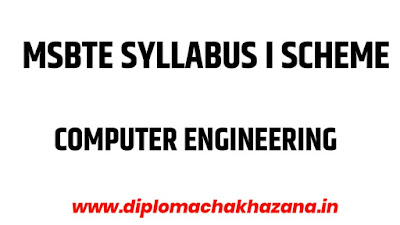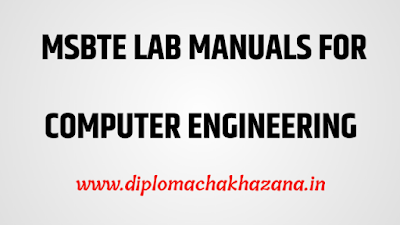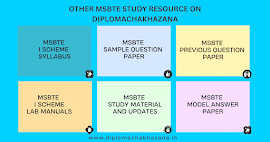1.Which of the following is true about Computer Architecture?
A. It acts as the interface between hardware and software.
B. Computer Architecture tells us how exactly all the units in the system are arranged and interconnected.
C. Computer Architecture is concerned with the structure and behaviour of a computer system as seen by the user.
D. It involves Physical Components
Ans : A
Explanation: It acts as the interface between hardware and software is true statement and all other statement are related to Computer Organization.
2.Which of the following is true about Computer Organization?
A. It deals with high-level design issues.
B. It involves Logic (Instruction sets, Addressing modes, Data types, Cache optimization).
C. Computer Organization tells us how exactly all the units in the system are arranged and interconnected.
D. None of the Above
Ans : C
Explanation: Computer Organization tells us how exactly all the units in the system are arranged and interconnected is true about Computer Organization and all other statement are related to Computer Architecture.
3. Which format is used to store data?
A. BCH
B. BCD
C. Binary
D. Decimal
Ans : B
Explanation: BCD format is used to store data.
4.The program written and before being compiled or assembled is called ____________.
A. Start Program
B. Intermediate program
C. Source Program
D. Natural Program
Ans : C
Explanation: The program written and before being compiled or assembled is called Source Program.
5.The ________ is the computational center of the CPU.
A. Registers
B. ALU
C. Flip-Flop
D. Multiplexer
Ans : B
Explanation: The ALU is the computational center of the CPU.
6.The input devices use _______ to store the data received
A. Primary Memory
B. Secondary Memory
C. Buffer
D. External Memory
Ans : C
Explanation: The input devices use buffers to store the data received and when the buffer has some data it sends it to the processor.
7.The I/O devices are connected to the CPU via __________.
A. SDRAM's
B. Control circuits
C. Signals
D. BUS
Ans : D
Explanation: The I/O devices are connected to the CPU via BUS.
8.An optimizing Compiler does _________
A. Better compilation of the given piece of code
B. Takes advantage of the type of processor and reduces its process time
C. Does better memory management
D. All of the above
Ans : B
Explanation: An optimizing compiler is a compiler designed for the specific purpose of increasing the operation speed of the processor by reducing the time taken to compile the program instructions.
9.Which bus is used to connect the monitor to the CPU?
A. Single Bus
B. SCSI Bus
C. Multiple Bus
D. Rambus
View Answer
Ans : B
Explanation: SCSI BUS is usually used to connect video devices to the processor.
10.Which of the following is used to choose between incrementing the PC or performing ALU operations?
A. Conditional Units
B. Multiplexer
C. Control Codes
D. Memory bus
Ans : B
Explanation: The multiplexer circuit is used to choose between the two as it can give different results based on the input.
11.Which is not included as main component of CPU?
(A) Register set
(B) ALU
(C) Control
(D) I/O device
Ans:D
12.General register organization is also known as _______ CPU register organization.
(A) five
(B) seven
(C) six
(D) nine
Ans: B
13.Which type of multiplexers are used to design seven CPU register organization?
(A) 4 x 1
(B) 6 x 1
(C) 8 x 1
(D) 16 x 1
Ans: C
14.Control word in general register organization has how many bits?
(A) 20
(B) 16
(C) 12
(D) 14
Ans: D
15.How many fields are there in control word?
(A) 4
(B) 5
(C) 3
(D) 6
Ans: A
16. Computer has a built-in system clock that emits millions of regularly spaced electric pulses per _____ called clock cycles.
a) second
b) millisecond
c) microsecond
d) minute
Answer: a
Explanation: The regularly spaced electric pulses per second are referred to as the clock cycles. All the jobs performed by the processor are on the basis of clock cycles.
17. It takes one clock cycle to perform a basic operation.
a) True
b) False
Answer: a
Explanation: It takes exactly one clock cycle to perform a basic operation, such as moving a byte of memory from a location to another location in the computer.
18. The operation that does not involves clock cycles is _________
a) Installation of a device
b) Execute
c) Fetch
d) Decode
Answer: a
Explanation: Normally, several clock cycles are required to fetch, execute and decode a particular program.
Installation of a device is done by the system on its own.
19. The number of clock cycles per second is referred as ________
a) Clock speed
b) Clock frequency
c) Clock rate
d) Clock timing
Answer: a
Explanation: The number of clock cycles per second is the clock speed. It is generally measured in gigahertz(109 cycles/sec) or megahertz (106 cycles/sec).
20. CISC stands for ____________
a) Complex Information Sensed CPU
b) Complex Instruction Set Computer
c) Complex Intelligence Sensed CPU
d) Complex Instruction Set CPU
Answer: b
Explanation: CISC is a large instruction set computer. It has variable length instructions. It also has variety of addressing modes.
21. Which of the following processor has a fixed length of instructions?
a) CISC
b) RISC
c) EPIC
d) Multi-core
Answer: b
Explanation: The RISC which stands for Reduced Instruction set computer has a fixed length of instructions. It has a small instruction set. Also has reduced references to memory to retrieve operands.
22. Processor which is complex and expensive to produce is ________
a) RISC
b) EPIC
c) CISC
d) Multi-core
Answer: c
Explanation: CISC stands for complex instruction set computer. It is mostly used in personal computers. It has a large instruction set and a variable length of instructions.
23. The architecture that uses a tighter coupling between the compiler and the processor is ____________
a) EPIC
b) Multi-core
c) RISC
d) CISC
Answer: a
Explanation: EPIC stands for Explicitly parallel instruction computing. It has a tighter coupling between the compiler and the processor. It enables the compiler to extract maximum parallelism in the original code.
24.MAR stands for ___________
a) Memory address register
b) Main address register
c) Main accessible register
d) Memory accessible register
Answer: a
Explanation: The MAR stands for memory address register. It holds the address of the active memory location.
25. A circuitry that processes that responds to and processes the basic instructions that are required to drive a computer system is ________
a) Memory
b) ALU
c) CU
d) Processor
Answer: d
Explanation: The processor is responsible for processing the basic instructions in order to drive a computer. The primary functions of a processor are fetch, decode and execute.
26.The ‘heart’ of the processor which performs many different operations _____________
a) Arithmetic and logic unit
b) Motherboard
c) Control Unit
d) Memory
Answer: a
Explanation: The Arithmetic and logic unit performs all the basic operations of the computer system. It performs all the arithmetic(+,-,*,/,etc) as well as the logical operations( AND, OR, NOT, etc.).
27.ALU is the place where the actual executions of instructions take place during the processing operation.
a) True
b) False
Answer: a
Explanation: ALU is a combinational electronic circuit which basically performs all the logical or the bitwise operations and the arithmetic operations. Therefore, it is the place where the actual executions of instructions take place.
28.Which of the following is not a bitwise operator?
a) |
b) ^
c) .
d) <<
Answer: c
Explanation: All except the dot(.) operator are bitwise operators.
| : Bitwise OR
^ : Bitwise XOR
<< : Shift Left
29.The sign magnitude representation of -1 is __________
a) 0001
b) 1110
c) 1000
d) 1001
Answer: d
Explanation: The first leftmost bit i.e. the most significant bit in the sign magnitude represents if the number is positive or negative. If the MSB is 1, the number is negative else if it is 0, the number is positive. Here, +1=0001 and for -1=1001.
30.IEEE stands for ___________
a) Instantaneous Electrical Engineering
b) Institute of Emerging Electrical Engineers
c) Institute of Emerging Electronic Engineers
d) Institute of Electrical and electronics engineers
Answer: d
Explanation: The IEEE is an organization of professionals in the field of electronics and electrical engineering. IEEE has given certain standards of its own which are followed in the field of computer science and electrical engineering.
31.The ALU gives the output of the operations and the output is stored in the ________
a) Memory Devices
b) Registers
c) Flags
d) Output Unit
Answer: b
Explanation: Any output generated by the ALU gets stored in the registers. The registers are the temporary memory locations within the processor that are connected by signal paths to the CPU.
32.The process of division on memory spaces is called ______________
a) Paging
b) Segmentation
c) Bifurcation
d) Dynamic Division
Answer: b
Explanation: The memory space is divided into segments of dynamic size. The programmer is aware of the segmentation and can reallocate the segments accordingly.
33.Number of bits in ALU is _________
a) 4
b) 8
c) 16
d) 2
Answer: c
Explanation: Arithmetic and Logic Unit consists of 16bits. They perform certain Arithmetic and bitwise operations (add, subtract, AND, OR, XOR, Increment, decrement, shift).
34. Which flag indicates the number of 1 bit that results from an operation?
a) Zero
b) Parity
c) Auxiliary
d) Carry
Answer: b
Explanation: The parity flag indicates the number of 1 bit in any operation. The resultant bit is called the parity bit. The main aim of the parity bit is to check for errors.
35. The bitwise complement of 0 is ___________
a) 00000001
b) 10000000
c) 11111111
d) 11111110
Answer: c
Explanation: Bitwise complement is basically used to convert all the 0 digits to 1 and the 1s to 0s.
So, for 0 = 00000000(in 8-bits) ::: 11111111(1s complement). The bitwise complement is often referred to as the 1s complement.
36. A register is defined as ___________
a) The group of latches for storing one bit of information
b) The group of latches for storing n-bit of information
c) The group of flip-flops suitable for storing one bit of information
d) The group of flip-flops suitable for storing binary information
Answer: d
Explanation: A register is defined as the group of flip-flops suitable for storing binary information. Each flip-flop is a binary cell capable of storing one bit of information. The data in a register can be transferred from one flip-flop to another.
37. The register is a type of ___________
a) Sequential circuit
b) Combinational circuit
c) CPU
d) Latches
Answer: a
Explanation: Register’s output depends on the past and present states of the inputs. The device which follows these properties is termed as a sequential circuit. Whereas, combinational circuits only depend on the present values of inputs.
38. How many types of registers are?
a) 2
b) 3
c) 4
d) 5
Answer: c
Explanation: There are 4 types of shift registers, viz., Serial-In/Serial-Out, Serial-In/Parallel-Out, Parallel-In/Serial-Out and Parallel-In/Parallel-Out.
39. The main difference between a register and a counter is ___________
a) A register has no specific sequence of states
b) A counter has no specific sequence of states
c) A register has capability to store one bit of information but counter has n-bit
d) A register counts data
Answer: a
Explanation: The main difference between a register and a counter is that a register has no specific sequence of states except in certain specialised applications.
40. In D register, ‘D’ stands for ___________
a) Delay
b) Decrement
c) Data
d) Decay
Answer: c
Explanation: D stands for “data” in case of flip-flops and not delay. Registers are made of a group of flip-flops.
41. Registers capable of shifting in one direction is ___________
a) Universal shift register
b) Unidirectional shift register
c) Unipolar shift register
d) Unique shift register
Answer: b
Explanation: The register capable of shifting in one direction is unidirectional shift register. The register capable of shifting in both directions is known as a bidirectional shift register.
42. A register that is used to store binary information is called ___________
a) Data register
b) Binary register
c) Shift register
d) D – Register
Answer: b
Explanation: A register that is used to store binary information is called a binary register. A register in which data can be shifted is called shift register.
43. A shift register is defined as ___________
a) The register capable of shifting information to another register
b) The register capable of shifting information either to the right or to the left
c) The register capable of shifting information to the right only
d) The register capable of shifting information to the left only
Answer: b
Explanation: The register capable of shifting information either to the right or to the left is termed as shift register. A register in which data can be shifted only in one direction is called unidirectional shift register, while if data can shifted in both directions, it is known as a bidirectional shift register.
44. How many methods of shifting of data are available?
a) 2
b) 3
c) 4
d) 5
Answer: a
Explanation: There are two types of shifting of data are available and these are serial shifting & parallel shifting.
45. In serial shifting method, data shifting occurs ____________
a) One bit at a time
b) simultaneously
c) Two bit at a time
d) Four bit at a time
Answer: a
Explanation: As the name suggests serial shifting, it means that data shifting will take place one bit at a time for each clock pulse in a serial fashion. While in parallel shifting, shifting will take place with all bits simultaneously for each clock pulse in a parallel fashion.









0 Comments
Please feel free to comment. Being diploma students We are always ready to help diploma Students